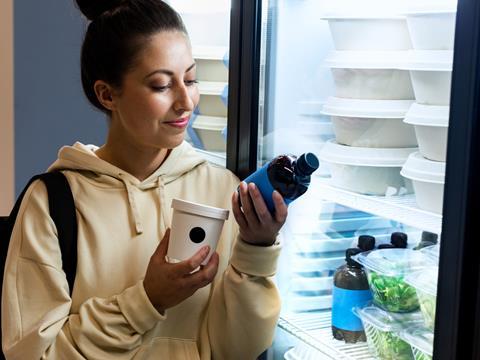
Will consumers’ food consumption habits in 2030 be driven by a desire to be climate-friendly, or will we be worn out by the discussion around climate change? Will the need for food packaging diminish with the rise of packaging-free shops and reusable materials? How will digitalization continue to change the way in which our food is purchased and delivered? A report commissioned by the global chemical company Kemira discusses four possible future scenarios regarding how we will purchase, package and consume food in Europe in 2030.
“Food and food packaging play a significant role in discussions about sustainability and resource efficiency. Global megatrends are impacting the ways we consume and package food, and the food packaging industry has already seen a wave of innovations in response. As an important part of the value chain for fiber-based packaging solutions, we at Kemira wanted to investigate what food and food packaging might look like in ten years’ time. The future scenarios are a way to explore the possible outcomes of developments we can already see in the market,” says Antti Matula, Senior Vice President, Global Product Lines and Business Development at Kemira.
To create the future scenarios, an international panel of experts was interviewed. The panelists included experts from across the food and packaging value chain: paper and board manufacturers, packaging converters, food brand owners, and regulatory experts, as well as researchers from related fields.
The four scenarios discuss consumer attitudes and behavior, places and ways of purchasing food, food packaging, recycling schemes, and regulation.
In “Individualism to the max”, the food industry aims to serve a diverse variety of fragmented consumer interests and tastes. Food choices are an essential part of people’s identity and food brands are highly attuned to delivering experiences. Packaging materials are used in high volumes and in varying combinations, leading to challenges in recycling.
“A totally green experience” paints a picture of a consumer who is determined to make climate-friendly choices, which can be seen through their purchasing decisions. By doing this they drive the food industry to act. Plastic packaging is frowned upon, and packaging-free shops and edible packaging emerge.
In “Practicality on-the-go”, convenience is the most important factor for consumers, with everything else secondary, including sustainability. Food is purchased via retailers’ apps and food delivery platforms and then either delivered to the door via one of a multitude of delivery options or consumed on-the-go from easy-to-use, practical packaging.
“The effortless closed loop” is a scenario where both the food industry and packaging materials are highly regulated. Packaging is stripped down and reusable, durable packaging is commonplace, and individually packaged products no longer exist. Food brands innovate and work closely together with packaging suppliers and the whole value chain to achieve common sustainability goals.
“The fiber-based food-packaging value chain has been presented with a huge opportunity as the world seeks renewable and recyclable solutions to solve the challenges of packaging waste. We want to share these scenarios with the value chain to provide some food for thought for strategic discussions, to be better prepared for what the future may hold, and to inspire new cooperation projects. Now is the time to make a tangible impact on the future of the packaging industry,” concludes Matula.
The full report can be viewed here: www.kemira.com/board-see-the-invisible/














